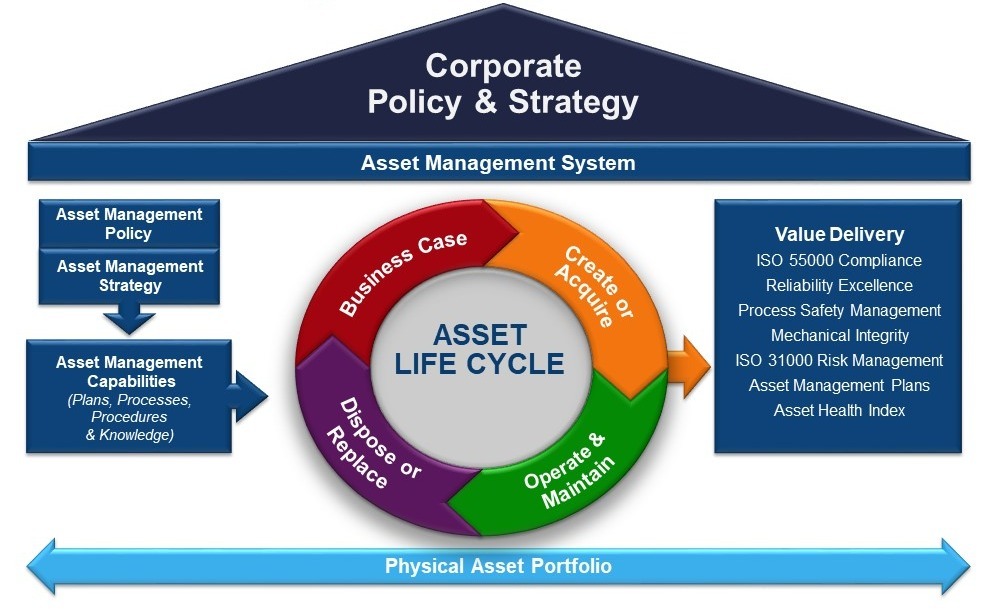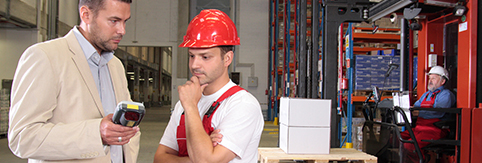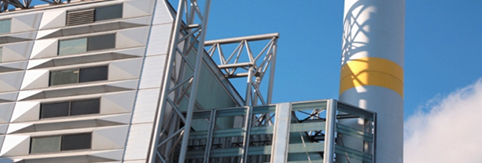LCE’s Asset Management System Implementation Framework
To explain how asset management systems work, LCE has developed an implementation framework model that helps companies visualize the intersection of their business processes.

The Asset Management System Framework incorporates the key features of the ISO 55000 Asset Management standard. These include a demonstrated link between a company’s overall leadership and strategic planning and the resulting asset management policy, strategy, and objectives; and the ability to define how the system works. The competency and proficiency of an asset management system is largely defined through the effectiveness of the asset management capabilities. It is here where the processes, procedures and knowledge are defined and applied across all stages of the asset lifecycle.
In these nine workstreams, LCE helps you develop the processes, procedures and knowledge required to manage the asset life cycle.
Leadership and Strategy
Actions and processes required to create asset management policy, strategy and objectives.
Reliability Engineering
Processes for improving the total cost of ownership while optimizing the value the assets produce.
CAPITAL DELIVERY
Processes for deploying capital and delivering assets, optimizing cost of ownership across the life cycle.
Work Management
Best practices for planning and scheduling that lower costs and improve productivity.
materials MANAGEMENT
MRO and storeroom best practices that yield lower maintenance costs and improved productivity.
Operator-driven Reliability
Processes for optimizing the value of assets by focusing on the development of standard work.
SHUTDOWN, TURNAROUND AND OUTAGE MANAGEMENT
Best practices for managing shutdowns, turnarounds and outages.
EAM / CMMS
Processes to shape an EAM or CMMS system so that it supports asset management best practices.








